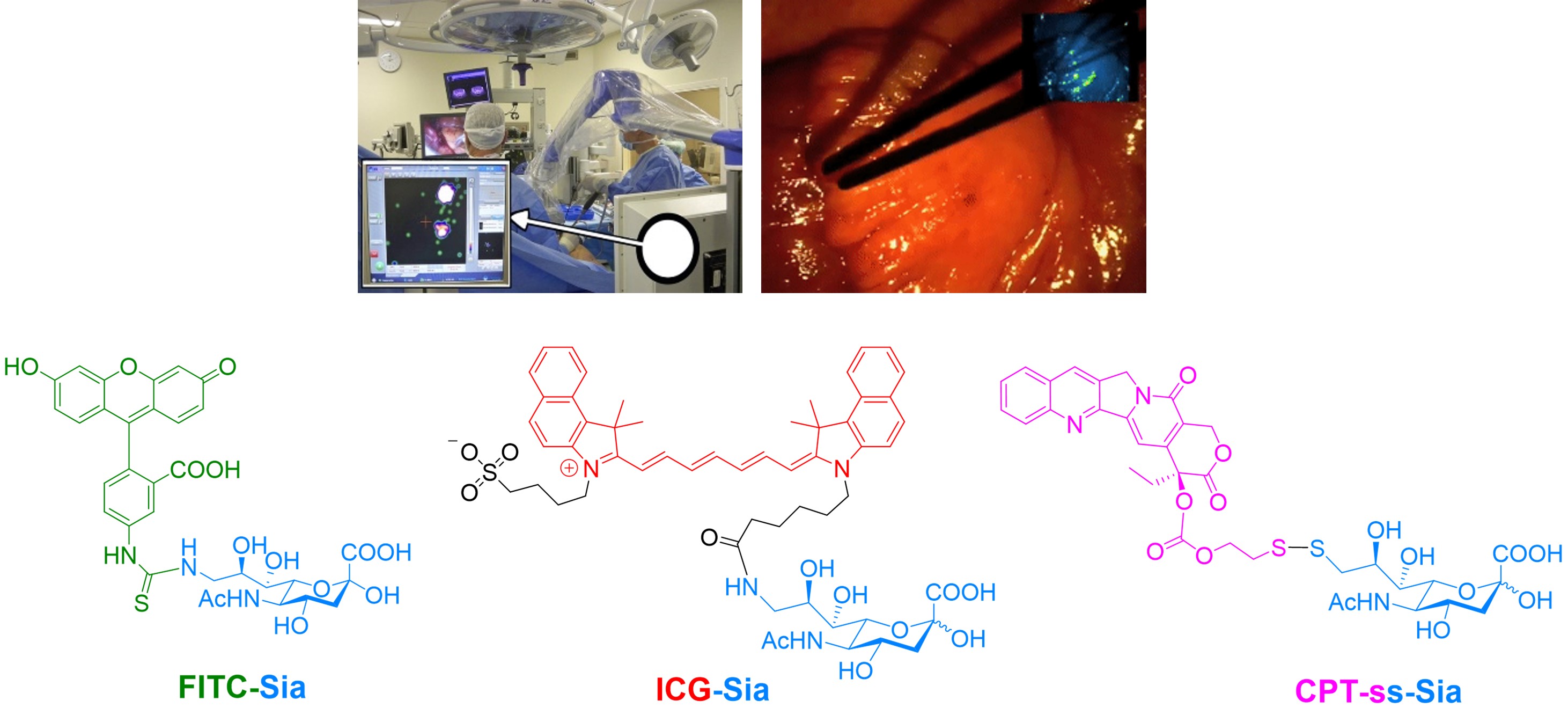
Beyond glycoconjugate vaccines, carbohydrates (particularly sialic acid) have emerged as a research hotspot in cancer diagnosis and therapy. To address the clinical challenge of precise localization of small-sized tumors during surgery, we designed a series of sialic acid-based theranostic agents, achieving breakthroughs in fluorescence/photoacoustic dual-modal imaging, photothermal/photodynamic therapy, and chemotherapy for murine tumors, even below the clinical detection limit. Key achievements include:
(1) Fluorescein Isothiocyanate-Conjugated Sialic Acid (FITC-Sia) for Tumor Imaging: FITC-Sia effectively labeled cell membranes, enabling localization of murine hepatocellular carcinomas smaller than the clinical detection threshold. This work challenged the conventional view (e.g., Prof. Bertozzi's group) that only sialic acid derivatives with small substituents can be metabolically incorporated into cell membranes, demonstrating that C9-modified sialic acid with bulky groups retains metabolic viability (Biomater. Sci. 2014).
(2) Near-Infrared Sialic Acid Probe (pNIR-Sia) for Imaging-Guided Photothermal Therapy: pNIR-Sia exhibited prolonged tumor retention and served as the first acid-activated photothermal agent, enabling integrated imaging/therapy (Chem. Sci. 2015).
(3) Sialic Acid-Hapten Conjugate (Sia-DNP) for Tumor Immunomodulation: Sia-DNP, metabolically displayed on tumor glycocalyx, pioneered a new strategy for immune regulation (Chem. Sci. 2016).
(4) Sialic Acid-Indocyanine Green Conjugate (ICG-Sia) for Dual-Modal Therapy: ICG-Sia showed excellent tumor targeting and long circulation, achieving potent photothermal/photodynamic ablation of solid tumors under NIR irradiation (J. Mater. Chem. B. 2022).
(5) Camptothecin-Sialic Acid Prodrug (CPT-ss-Sia) for Self-Assembled Chemotherapy: The disulfide-linked CPT-ss-Sia formed nanoparticles, significantly suppressing tumor growth with reduced toxicity compared to free CPT (Biomater. Sci. 2023).